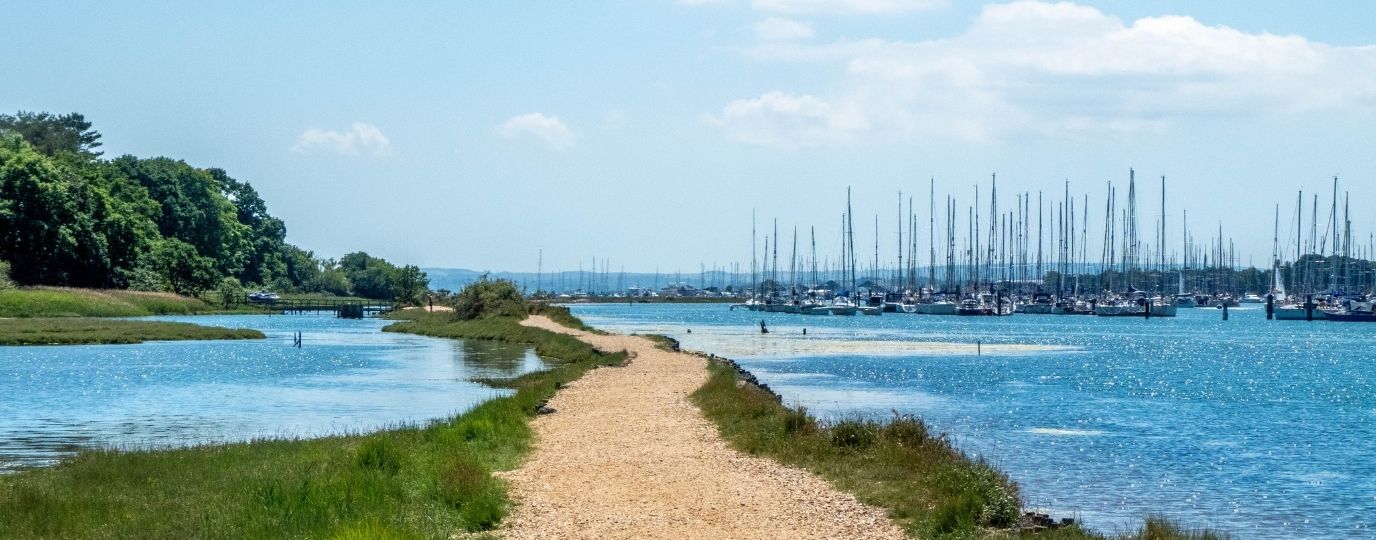Cities can often be unexpected treasure-troves of nature. Chris Platt explores London to discover where nature has taken up residence, and where you can reconnect with the wild.
You would think that the sprawling traffic and endless concrete would turn away wildlife, but it can often be the opposite. London is no exception to the rule. Londoners may joke about the size of the rats on the tube, or the abundance of feral pigeons – seemingly the only bird species seen regularly – but the truth, if you look just under the surface, there is plenty of nature to be found in and around the capital.

London skyline
1. Central – St. James’ Park
You can’t get much more central than the lovely St. James’ Park, overseen by Royal Parks. Wedged between Westminster and Buckingham Palace, this beauty plays host to some amazing wildlife. It seems prudent to point out that arguably the most famous inhabitants are a species that would be more at home on the shores of Australia or Miami Beach, Florida: Pelicans.
Back in 1664, the Russian Ambassador decided that pelicans would act as the perfect gift for the UK and henceforth created a tradition that has seen over 40 great white pelicans call St. James’ Park home. A fairly recent trio, Sun, Moon, and Star, have made the trip from Prague Zoo and can be easily spotted against the leafy backdrop. Birds are certainly the order of the day at St. James’ with all garden favourites making an appearance – blue tits, blackbirds, robins et al. If you’re lucky, you may even spot a tawny owl or a greater spotted woodpecker, who also call St. James’s home.

St James Park Pelicans

St James Park
2. North – Highgate/Queens Wood
A real hidden gem of London. Hop onto the Northern Line and jump off at Highgate (unsurprisingly). You’ll be flanked on two sides by ancient woodland. To the West is Highgate Wood and to the East Queens Wood. Both are superb locations to see a wide variety of wildlife, but also just magical natural spaces. Despite being ancient woodland (possibly even dating back to prehistoric times), it wasn’t until 1990 that Haringey listed both as Local Nature Reserves. There are some glorious examples of ancient oaks, beech, hornbeam, hawthorn and hazel. It’s easy to forget that you’re only minutes away from some of the most vibrant areas of the capital, with Camden and Angel being only a few stops away.
For all budding entomologists out there, over one hundred species of spiders have been spotted in Queens wood and a nationally rare jewel beetle is widespread. If you are unable to spot a woodpecker in St. James’ Park then head to Queens Wood, as they regularly see members of each of the three woodpecker types in their patch of the old wildwood that once covered all of England.
3. South West – London Wetland Centre
If you’re not one to risk leaving the house and not seeing what you were hoping for then don’t worry, the London Wetland Centre is for you. Presided over by the international Wildfowl and Wetland Trust (WWT), this site has converted four Victorian reservoirs into one of the most expansive wetlands in the country, right on the cusp of the famous River Thames too. The park offers a range of experiences, with two distinct routes to enjoy the ecosystem. One route takes you around the world, with open-range enclosures mimicking the landscape of Africa, Australia and the Far East. This is the only place in London that you’ll be able to see wildfowl such as Red Breasted Geese, Bewick’s Swans or Barnacle Geese all year round.

London Wetland Centre
However, if wild wildlife is your bag, the second route at the centre will guide you round the enormous marshland and into a selection of bird hides. Here you can experience terns, gulls, grebes, lapwings, plovers – the lot. I am one of the lucky people to have timed things just right and seen one of the UK’s most elusive and endangered species: the Bittern. What’s more, the London Wetland Centre is one of the best places to catch a glimpse of the first mammal to make our list. The centre is home to two gorgeous otters. Whether you want something up close and personal or to simply while the day away in the serenity of nature, WWT’s London Wetland Centre is certainly one to add to the list.
4. East – Rainham Marshes
As a born and bred Essex boy myself, I realise it’s a bit cheeky to include Rainham Marshes in a post about London, as it technically falls in the borders of England 8th largest county. But, stay with me, because if you visit one of the RSPB’s most gorgeous nature reserves you won’t be disappointed. Rainham Marshes is a haven for wildlife and you’ll see and hear plenty. The concentration of wildfowl attracts large numbers of peregrine falcons to the marshes, so you may be lucky enough to see them. Blink and you’ll miss them though, as they are the fastest creature on the planet, reportedly reaching speeds of 200km/h when in freefall.

Rainham marshes

Rainham marshes
10th June in 2020, the first glow-worm sighting was announced and there certainly aren’t many places in London where you can experience these fluorescent bugs. It’s also a great place for cyclists for the velo-enthusiasts out there, you can add improving fitness to the benefits of Rainham Marshes alongside the benefits of wildlife and wellness.
5. South-East – The Green Chain Walk
On the topic of fitness, if you are a keen rambler then the Green Chain Walk needs to be added to your rambling bucket list. Weaving its way between the Thames and Crystal Palace, this interconnected route of open spaces and 11 walking trails. One of the nicest sections takes you through Dulwich and Sydenham Hill Woods. The London Wildlife Trust cares for their oldest natural area, which consists of new and ancient woodlands, as well as some remnants of Victorian gardens. It’s technically a part of the Great North Wood, that once stretched from Deptford to Selhurst.
There was once a railway line that passed through the woods, but this is long gone, but its legacy lives on positively. Namely, a railway arch at Sydenham Hill Wood now acts as a natural bat roost, and this spot is a fantastic place to enjoy the winged mammals so in need of help in the UK. If you want to be a bit more hands-on, LWT holds volunteer open days from 10:30 – 3:30 on Wednesdays and Thursdays, as well as the Second and Fourth Sundays of the month.

Sydenham Hill Woods ruins

Sydenham Hill Woods
So, as you can see, these 5 spots are a great starting point at staying wild in the city. There are heaps more places in and around the UK’s capital, but these are 5 really amazing gems (some hidden, some not so much). They cater for whatever levels of intrepidness you fancy and can be great spots to take the kids or the dog (always check guidance for our four-legged friends on respective websites).
They are most importantly some of the best examples of how essential biodiversity is for both flora, fauna and for ourselves. The positive effects on your health and wellbeing are undeniable. Visit them, help them and reap the benefits of having such amazing places to get outside so close to London.





